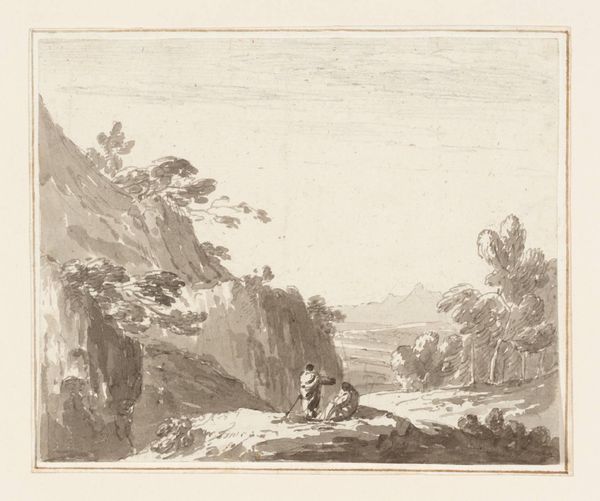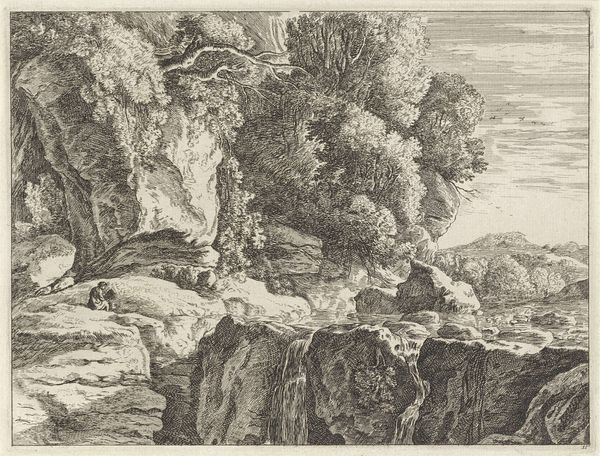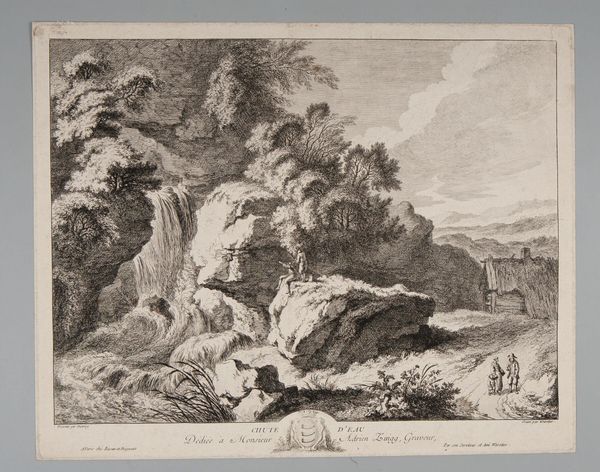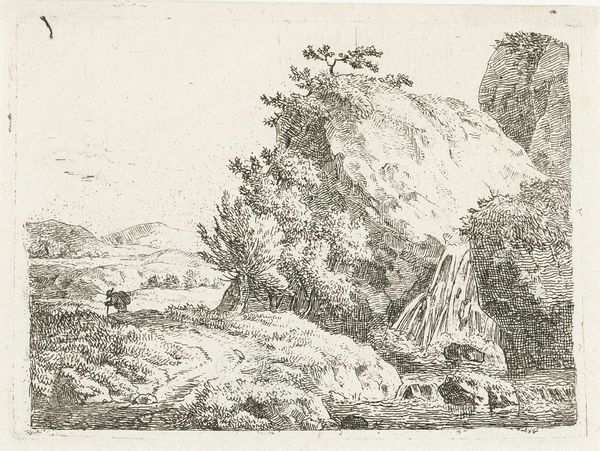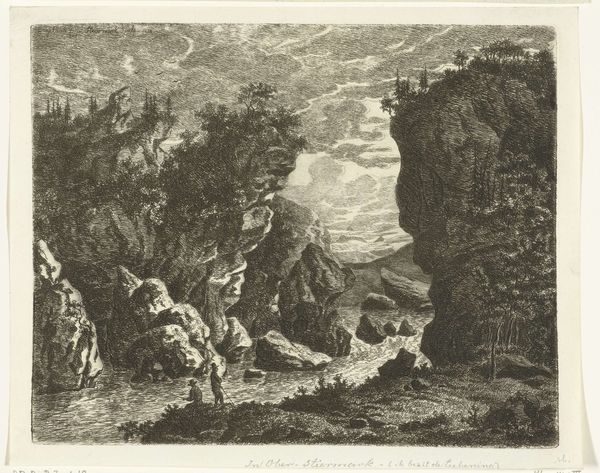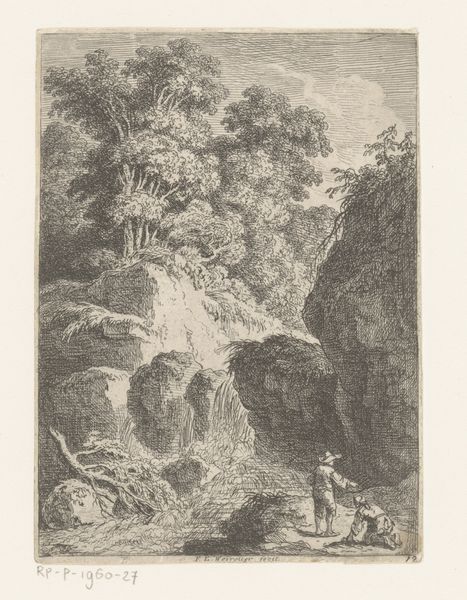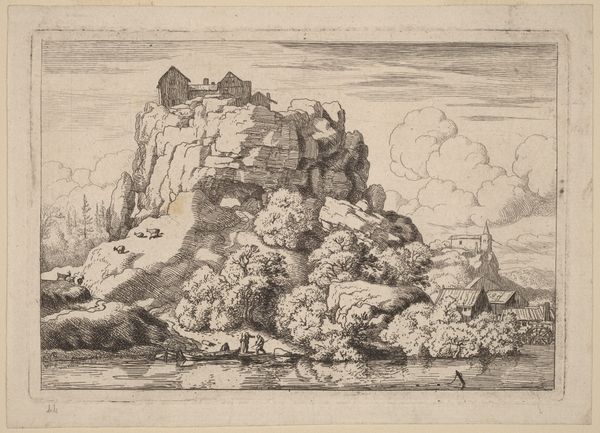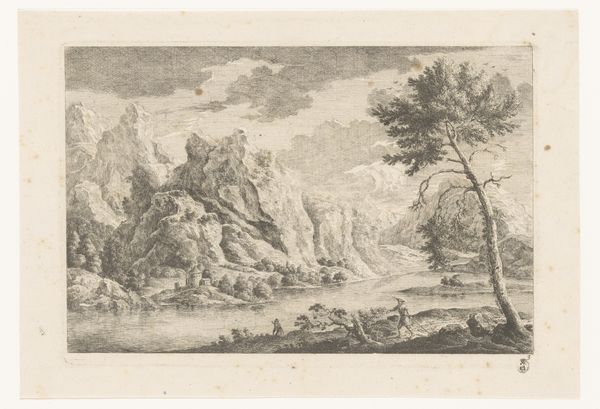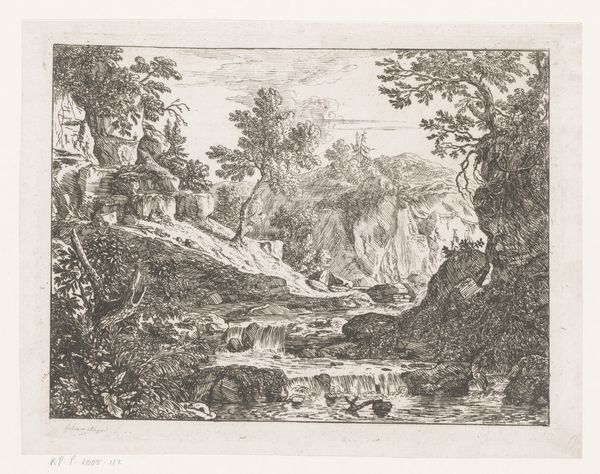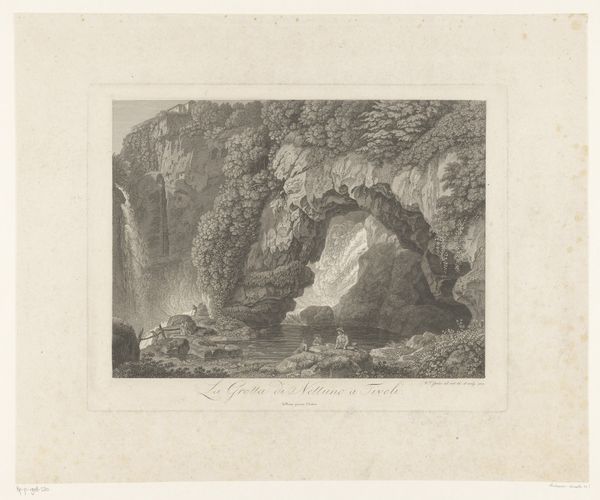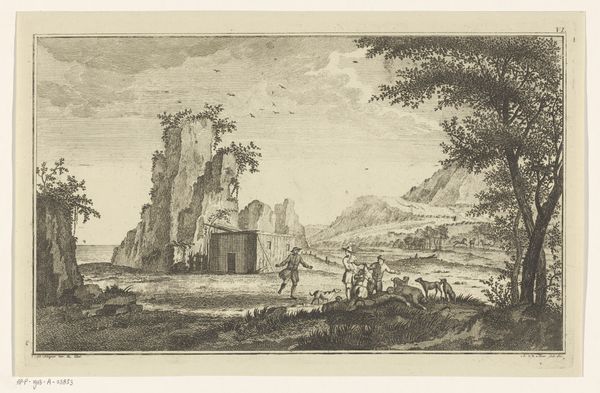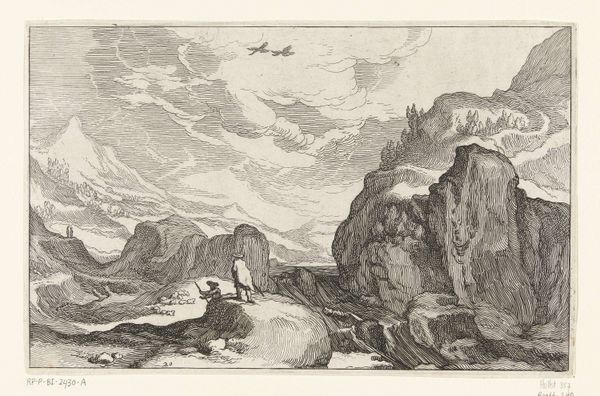
etching
#
etching
#
old engraving style
#
landscape
#
figuration
#
romanesque
Dimensions: height 115 mm, width 173 mm
Copyright: Rijks Museum: Open Domain
Editor: So, here we have "Two Hermits in a Rocky Landscape" by Franz Edmund Weirotter, etched sometime between 1766 and 1767. Looking at the dense cross-hatching, the whole scene seems to emerge from the earth itself. What do you see in this piece, looking at the way it was made? Curator: What I see is labor made visible. The etching process, all those tiny lines carved into a metal plate, speaks volumes about the hand of the artist and the material processes involved in reproducing images for consumption. We often think of "fine art" as being distinct from craft, but Weirotter's work challenges that. Look at the deliberate construction of the landscape itself. It’s not just a scene; it's a built environment using found materials. Editor: Right, those figures are quite literally surrounded by the products of labor - their shelter, even the way the rocks are 'drawn'. Do you think this reflects the social context? Curator: Absolutely. This was a period where the consumption of art was intertwined with larger economic and social systems. The printing process allowed for wider distribution, transforming art into a commodity. This etching becomes a material document of that shift, highlighting not just what is depicted, but how it was made and for whom. Editor: So, the value lies not just in the image, but in the entire production chain. That's fascinating. It's almost like the process itself is part of the art's meaning. Curator: Precisely. By understanding the materiality and the means of production, we move beyond the surface and delve into the broader context of creation and consumption in the 18th century. It makes us think about who had access to this image, and what purpose it served. Editor: That definitely shifts how I see it. I initially saw just a picturesque landscape. Thanks! Curator: Indeed. It allows for a richer appreciation beyond mere aesthetics, considering labor, materiality, and social context.
Comments
No comments
Be the first to comment and join the conversation on the ultimate creative platform.

